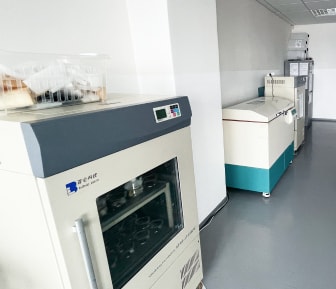Green synthesis of nucleoside analogues

Enzymes availability in high quality and reasonable price is a key factor for successful green synthesis of nucleoside analogues.
General introduction
- Nucleosides are molecules central to nearly all areas of life science and are arguably the most versatile class of biomolecules.
- Nucleoside analogues (NA) constitute an important class of antimetabolites with high immunosuppressive, antineoplastic, bactericidal, and antiviral activity
- Nucleoside analogues represent a large class of agents that include drugs for the treatment of cancer (cytarabine, gemcitabine, mercaptopurine, azacytidine, cladribine, decitabine, fluorouracil, floxuridine, fludarabine, nelarabine), rheumatologic diseases (azathioprine, allopurinol), multiple sclerosis (cladribine) and even bacterial infections (trimethoprim).
- Nucleoside and nucleotide analogue drugs are cornerstones in current antiviral therapy used in the therapy of human immunodeficiency virus (HIV) infection, hepatitis B virus (HBV), hepatitis C virus (HCV), cytomegalovirus (CMV), herpes simplex virus (HSV) and varicella-zoster (VZV) infection.
- The nucleoside analogues resemble naturally occurring nucleosides and act by causing termination of the nascent DNA chain. These agents are generally safe and well tolerated as they are used by the viral, but not human polymerases in DNA replication.
Chemical synthesis
- Given this pivotal role of nucleosides in medicinal and biological chemistry, it is easy to see why chemical methods to synthesize these compounds have attracted the interest of researchers for several decades and continue to do so in present times.
- However, nucleosides are less than trivial to make. Their relatively high content of heteroatoms makes many of them poorly soluble in common organic solvents, while their dense arrangement of functional groups (particularly on the ribosyl moiety) generally requires extensive protecting group schemes and demands a high degree of selectivity in key bond-forming steps. As such, truly “efficient” nucleoside synthesis is still considered an unmet challenge in organic chemistry, despite more than seven decades of research in the field.
- Numerous synthetic methods have been developed to prepare these compounds and their structural analogues. Most of these synthetic approaches present important drawbacks, such as the use of non-volatile and harmful solvents (DMF, pyridine), preparation of substrates or phosphorus reagents in their alkyl ammonium forms due to solubility issues, anhydrous conditions, and fastidious purifications.
Biosynthesis of nucleosides by using enzymes
- Enzyme-mediated processes offer a green, eco-friendly and efficient alternative to the traditional multistep and environmentally harmful chemical processes.
- The use of bioprocesses catalyzed enzymes has emerged as a green synthetic alternative with multiple advantages, such as mild reaction conditions, high efficiency, and regio-, stereo-, enantioselectivity. In this sense, the trans glycosylation reaction catalyzed by nucleoside phosphorylases (NPs) or 2′-deoxyribosyltransferases (NDTs) is the most studied biocatalytic methodology for the synthesis of nucleoside analogs (NAs) up to date. (see the next slide please).
- Despite the impressive biocatalytic synthesis routes that have been developed in recent decades there are still prejudices against enzymatic catalysts. This is often due to observed or perceived instabilities (to temperature, pH, cosolvents or shearing forces), the relatively high price of enzymes, or their limited reusability compared to organo-catalysts or transition metals.
- Due to our new expression system, we have in house source of cheap enzymes which allowed us to develop large scale green enzyme-based biosynthesis of nucleosides.
